Woman-on-Woman Bullying: An Affront to Sisterhood
Childhood bullying can have lasting effects on our self-esteem and relationships. Bullying, 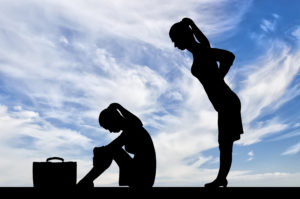 however, does not always end when we graduate middle or high school. Unfortunately, bullying can persist well beyond our childhood years, well into adulthood.
however, does not always end when we graduate middle or high school. Unfortunately, bullying can persist well beyond our childhood years, well into adulthood.
I find we’re of two minds as a society when it comes to bullying. On the one hand, the #MeToo Movement has done an incredible job of bringing sexual harassment to the forefront of the national conversation. It has, for many women, built a platform for community and has made important inroads into how we define appropriate behavior and how we set limits on that which is not.
Bullying Seems to Be Getting a Free Pass
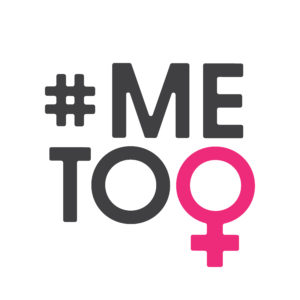 We have much more to do on this front, especially for women of color and those who have few economic choices, but I am encouraged by this start. Call me a half-full-glass type of person—please!—but I am always encouraged when greater consciousness is raised.
We have much more to do on this front, especially for women of color and those who have few economic choices, but I am encouraged by this start. Call me a half-full-glass type of person—please!—but I am always encouraged when greater consciousness is raised.
Still, bullying in general, seems to be getting a free pass, as our divisions intensify and our civility wanes. Adults bullies can be found just about everywhere these days. Take one look at social media; listen to our politicians, the news. Adult bullying also occurs closer to home, often at work, sometimes even in our own social circles and in our own living spaces.
The #MeToo Movement has put the spotlight on men who abuse their power to harm women. (See new allegations against the Victoria Secret organization highlighted in Saturday’s New York Times.) While most women can easily identify their own MeToo moments, many women have suffered at the hands of other women too.
Examining the Harm Women Do to Other Women is Not a Comfortable Conversation, But It Is a Necessary One
Woman-on-woman bullying can even feel like the deeper betrayal. We generally expect more of other women than we do of men, and when women hurt us, when they perpetrate the bullying, it cuts right to the bone. Examining the harm women do to other women is not a comfortable conversation, for sure, but it is a necessary one, nonetheless.
Phyllis Chesler ran into an enormous amount of pushback when she began researching her book Woman’s Inhumanity to Woman.
Much of that pushback came from feminists, who thought her book would cast women in a bad light and that her research would be used against women:
“My subject was seen as challenging the politically correct view that women are morally superior to and more peaceful than men, that all women are sisters, and that sisterhood is powerful … back in 1980 … most people, including feminist academics, were not talking about the ways in which women, like men, internalize sexist values … In addition, because male violence is so much more overwhelming, threatening, and visible, woman-on-woman violence, which mainly involves psychological and social punishments, did not seem as important. …”
Women Can Be Sexist Too!
There’s a great deal to unpack there! If I am totally honest—which I aspire to be—I would have to admit that I, too, believe women to be “morally superior to and more peaceful than men.” Most men, that is. Nature? Nurture? A little bit of both?
Or is this belief complete b.s.?
Here’s another idea to chew on: men do not exclusively own the capacity to be sexist. Women can be—and often are—sexist too!
Let’s read Chesler again:
“Like men, women have internalized sexist values. Like men, women are, unsurprisingly, human beings and are capable of both compassion and cruelty, cooperation and competition, selfishness and altruism.
Are women really sexists? Of course we are. This is hardly surprising since women grow up in the same culture that men do, and thus are not immune to that culture … To the extent that women are oppressed, we have also internalized the prevailing misogynist ideology which we uphold both in order to survive and in order to improve our own individual position vis-à-vis all other women.”
Ouch! And, yes! Of course we have internalized the misogyny in our culture! How could we not?
Misogyny Among Women
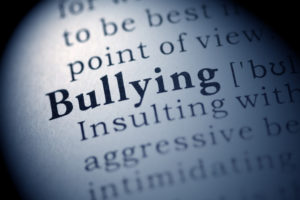 It’s what we do with those messages that matters. It’s what we will do going forward. Where do we still compete with other women where cooperation would be the healthier response?
It’s what we do with those messages that matters. It’s what we will do going forward. Where do we still compete with other women where cooperation would be the healthier response?
I certainly need to examine this question in my own life. I know I am not a Queen Bee. When I see an opportunity to empower another woman, I jump on it! Yet, I also know I can do better. Can you?
Raising consciousness is the first order of business. Let’s look several examples of woman-on-woman bullying and at the harm it can cause.
I’d like to turn to an interview I did with a dear friend of mine, Clare. (I am not giving her full name or the name of her school district. When you read some of the things she’s experienced, you’ll see why.)
Clare Was at the Mercy of Her Boss—A Queen Bee
Clare went back to get her education degree when she was 44. She was full of inspiration—and a bit of desperation. Her then husband had been out of work for quite some time. They had four teenaged kids and a mortgage, plus their Cobra health insurance payments, which were incredibly high.
In other words, Clare needed her teaching job. She was at the mercy of her boss, who happened to be a Queen Bee.
Unfortunately, Clare’s first principal “just didn’t like” her. Clare could have lived with that, but the abuse of power she suffered at this woman’s hands was harder to take.
“She held me to a much higher standard than she did the other teachers.” (Even though Clare shared lesson plans with another teacher in her grade, for example, Clare received poor ratings for hers, while her coworker received the highest of scores.)
Expectations were never made clear: “The principal kept shifting the rules. Just when I did what she asked me to do, she’d change her requests.”
This was enough to make Clare feel that she was on shaky ground, to make her question herself, but the principal also seemed to get great pleasure from playing more directly with Clare’s emotions. “Every time the class phone rang, my heart would drop,” Clare said. “I had 32 kids in front of me. It was hard to keep it together.”
“Gotcha!”
I can’t say I blame her. One particularly insidious incident occurred on St. Patrick’s Day. When the phone rang in Clare’s classroom, the principal was on the other end. “Ms. D.,” the principal said, “You have a package in the office. I wonder what it is. I wonder what it could be.” The principal kept repeating variations of the question. “I’m going to send someone to cover your class, so you can come down to the office and open it up.”
Weird and inappropriate. Disconcerting too.
But here’s the clincher: “You know what I think?” the principal asked. “It’s probably a pink slip.”
A pink slip?!?
Clare was terrified. And the principal made her wait. When the coverage finally came to her room and Clare was able to go downstairs, her stomach was in terrible knots, her mouth dry. She could barely keep the tears from flowing.
There was a group of people in the office when Clare arrived. There was no pink slip but, rather, a bouquet of flowers her husband had sent over in honor of the holiday.
“Gotcha!” the principal said and then burst out laughing, as did the others in the office. It seemed that everyone in the principal’s circle had been in on “the joke.”
“I tried everything I could to get her to like me,” Clare told me. “I even drove her home several times.”
Yet, Clare got no relief until she was able to leave that school–eleven years later!
Witnesses to Bullying Feel the Effects Too!
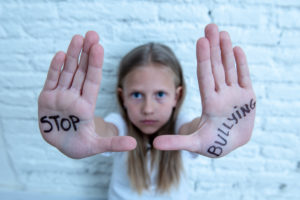 Other teachers in the school were aware of the bullying, yet no one came forward. Clare holds no hard feelings: “They couldn’t. They were afraid for their jobs.”
Other teachers in the school were aware of the bullying, yet no one came forward. Clare holds no hard feelings: “They couldn’t. They were afraid for their jobs.”
(I can certainly understand this constraint but find it curious how we expect kids to stand up to bullying when we have trouble doing it ourselves. Maybe we need to think twice before adding additional guilt to those kids who witness others being bullied but remain on the sidelines. Maybe need to give them better tools—for starters finding our own courage and becoming positive examples to follow.)
Clare’s coworkers may have saved their jobs, but they probably did not escape harmful effects from the experience of being a witness. There’s a term for that: Bystander Effects .
According to StopBullying.gov , “kids who witness bullying are more likely to:
- Have increased use of tobacco, alcohol, or other drugs
- Have increased mental health problems, including depression and anxiety
- Miss or skip school
Our Schools Are Hotbeds for Bullying—Adult Bullying Too
But kids are not the only ones who experience harmful effects of being bystanders. Several of the teachers that Clare has kept in touch with have also left the school. Yet, they have taken increased anxiety with them. One woman went to great lengths to stay under the radar in her new school. When her new principal called her down to the office one day (not to be reprimanded, by the way, but to discuss a new curriculum decision), the woman’s anxiety went through the roof. She kept thinking of Clare’s experiences and could not stop shaking.
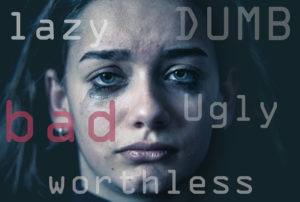 Clare is not alone. Other woman educators I spoke to also mentioned woman-on-woman bullying at their schools. Patti LaLonde, for example, said that the pervasive gossip at one of her previous schools was actually one reason she looked for another job. Having been a target of childhood bullying, Patti wanted no part of such a toxic environment.
Clare is not alone. Other woman educators I spoke to also mentioned woman-on-woman bullying at their schools. Patti LaLonde, for example, said that the pervasive gossip at one of her previous schools was actually one reason she looked for another job. Having been a target of childhood bullying, Patti wanted no part of such a toxic environment.
Our schools are hotbeds for bullying. We all know of the child-on-child bullying that goes on in the classroom, the lunchroom, the playground, but there’s too often teacher-on-child bullying and teacher-on-teacher and administrator-on-teacher bullying as well.
Too many schools have what’s known as a “bullying culture.” This a spiral that affects everyone in the environment. It not only normalizes toxic behavior but interferes with learning—and teaching!
While all sorts of bullying occur at schools, woman-on-woman bullying in the workforce occurs in every profession and industry.
Bunnarasy Left a Bullying Environment at Work and Entered Another Bullying Environment—Her Own Home
Bunnarasy, for example, a woman who came to the U.S. from Cambodia as a refugee in 1980, left a childhood overseas, where she was brutally bullied by an older half-sister, only to encounter further bullying here.
Bunnarasy’s first job in the U.S. was in an electronics company, where she was constantly bullied by another woman employee. New to the country and to the job, Bunnarasy felt that her hands were tied. To make matters worse—much worse—she returned home after her night shift to a physically and emotionally abusive husband.
She had no family here. No friends. There was no place to turn. Being bullied became an identity that she felt she could not hide: “It was as if there was a stain on my shirt that everyone could see.” She became depressed and isolated herself before she was able to break free of the job—and the husband—and the bullying cycles that had taken over her life.
When women are faced with bullies in every part of their lives, it can be incredibly difficult to come to the other side. Kudos to Bunnarasy! But even with support in the home and from friends, woman-on-woman bullying at the workplace can be devastating.
What Happens When the Childhood Queen Bee Grows Up and Meets Up with You at Work?
 Cecilia Harvey, founder and chair of Tech Women Today, knows the destruction the Queen Bee can create. When the Queen Bee Syndrome thrives in the office, it “hinders the advancement of women in the workplace, as well as damaging productivity, profit and progress.”
Cecilia Harvey, founder and chair of Tech Women Today, knows the destruction the Queen Bee can create. When the Queen Bee Syndrome thrives in the office, it “hinders the advancement of women in the workplace, as well as damaging productivity, profit and progress.”
She describes Queen Bees in the workplace as women who “treat colleagues in a demoralizing, undermining or bullying manner.” Harvey is quick to point out that “they should NOT be confused with strong, ambitious women in the workplace (which we applaud),” a very important distinction. “Queen Bees,” according to Harvey, “are adult versions of the mean girls from school – but now they have grown up and are more calculating.”
Cheryl Dellasega, author of Mean Girls Grown Up, agrees: “In adult women, it seems apparent that Relational Aggression” (the term used to describe emotional bullying based on social manipulation) “becomes much more deliberate as well as subtle.”
She adds that it is not only the Queen women need to be wary of: “If the bully is the Queen Bee, her sidekick is often the Middle Bee, who isn’t directly aggressive, but who creates a context where women who have a tendency to respond aggressively to threats will do so. For example, the Middle Bee may be the woman who makes sure the Queen Bee bully hears all the office coffee-break talk twisted, so it reflects badly on her. The Middle Bee woman senses which behaviors are guaranteed to incite a potential aggressor and doesn’t hesitate to use them.”
Sound familiar?
Prevalence of Woman-on-Woman Bullying at Work
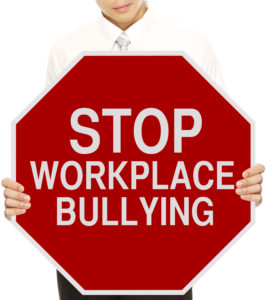 Woman-on-woman bullying in the workplace, unfortunately, is incredibly pervasive. In one survey, Ms. Harvey found that “approximately 70% had been the victim of either workplace bullying or covert undermining by a female boss.”
Woman-on-woman bullying in the workplace, unfortunately, is incredibly pervasive. In one survey, Ms. Harvey found that “approximately 70% had been the victim of either workplace bullying or covert undermining by a female boss.”
But bosses, she found, are not the only perpetrators: “Along with the approximately 70% who had endured ‘the sting’ of the Queen Bee boss, 33% had been on the receiving end of a woman on the same level or below being unhelpful, holding them back or undermining them.”
It’s the “Emotional and Psychological Violence of Social Aggression” That Cause So Much Damage
When our livelihoods are at stake, we often feel impossibly trapped in a bullying situation. But woman-on-woman bullying cuts deep for other reasons as well. It goes back to the social nature of the “warfare.” According to Dr. Ditta M. Oliker, it’s the “emotional and psychological violence of social aggression, including the sting and cruelty of the verbal ‘weapons’ women use” that cause so much damage. It’s the “excluding, ignoring, teasing, gossiping, secrets, backstabbing, rumor spreading and hostile body language (i.e., eye-rolling and smirking). Most damaging,” Dr. Oliker claims “is turning the victim into a social ‘undesirable.’”
Clare would agree. She has also experienced bullying in her new school at the hands of a group of women who target “the new teacher” every year. When we spoke about the adult bullying she experienced, I asked her about her tears. Were they tears of sadness, anger, frustration, or something else?
“It’s like they don’t like me, you know. It’s very hurtful. I feel left out. And then I’m exhausted. I’m tired. I’m emotionally drained.”
Woman-on-Woman Bullying Can Reopen Old Wounds
We talked about triggers.
“It reminds me of when I wasn’t part of the ‘in’ crowd. You know, it goes back to time I didn’t feel I fit in anywhere. It reminds me of abandonment.”
For people who have experienced trauma, this kind of woman-on-woman bullying can bring them back to when they had no power.
So what do we do about this hateful woman energy, this misdirection of woman power?
Again, I believe consciousness raising is the first step. Andrea Auten, who generously shared her experiences with childhood bullying in our last post, is in the process of looking at the role bullying plays in her life currently: “Since we talked, I’ve been examining the adult bullying I incur. It’s always women. I am powerful with men and seem to navigate interactions with ease. Women, though … it’s a throwback to those childhood events, and I end up in familiar degradation. So, I’m unraveling this these days.”
Is Womanhood Really a Sisterhood?
 Acknowledging the problem is not as easy as it sounds, however. Because we rely on each other for emotional support, we often cling to the notion of other women as our “sisters.” This is a wonderful notion, but we are not there yet—not in the way we need to be.
Acknowledging the problem is not as easy as it sounds, however. Because we rely on each other for emotional support, we often cling to the notion of other women as our “sisters.” This is a wonderful notion, but we are not there yet—not in the way we need to be.
Here’s Phyliss Chesler’s take:
“The feminists in my generation empowered each other in ways that no one else ever did or could. Many of us believed our own ecstatic rhetoric: we were sisters.” …We expected less of men and forgave them more than once, when they failed us. We expected far more of other women, who paradoxically had less power to share than men did…
As feminist women, we knew that we were doomed without sisterhood, so we proclaimed it, even in its absence. We wanted to will it into existence, verbally, without wrestling it into being. We didn’t understand that the sisterhood we so eagerly proclaimed was, like brotherhood, only an ideal, not yet a reality. We’d have to create sisterhood, daily, against considerable odds, and we’d also have to acknowledge our own sexism, as well as our racism, classism, homophobia, etcetera.”
We will “be doomed without sisterhood,” so why do we fight it?
Progress
 Clare, for one, sees progress, as she watches her own daughter, now a mother herself, and her daughter’s friends. “When you and I were raising our kids, there was that thing about working mothers and non-working mothers. We were so judgmental of each other.” Clare doesn’t see the same ridiculousness in her daughter’s generation. That’s promising.
Clare, for one, sees progress, as she watches her own daughter, now a mother herself, and her daughter’s friends. “When you and I were raising our kids, there was that thing about working mothers and non-working mothers. We were so judgmental of each other.” Clare doesn’t see the same ridiculousness in her daughter’s generation. That’s promising.
When I asked Clare if there was anything else she wanted to add to our discussion, she had this to say:
“We each have a story. It may not be written on our faces, but it’s there. Especially women. We carry so much in our lives. We have to start supporting each other more.”
“I’m going to back a sister up, always,” Clare said. And then she added some final words of wisdom, as I’ve come to know only Clare can do: “Vaginas have to stick with vaginas.”
Yes, Clare, I’d agree: Vaginas have to stick with vaginas.
As always, I’d love to hear your thoughts! How do you feel about the state of sisterhood today? Where do you personally fit in? Leave a comment or send me an email. And please feel free to share on social media—let’s get the word out and stand together!
See you in two weeks!
XOXO
Diane



This is so helpful to read. I’m an adult woman who is being bullied now in a social scene. The bullying has spread into a group of people who believe her assessment of me, though I’ve only spoken to her 10 minutes once or twice. Posts are made about me on social media, the bully and now her friends react to tagged photos of me with laughing or sad emojis. These are grown women over 50. I’m new to the group, so it’s essentially bullying the new girl, and there is a very strong aspect of “resource guarding” as most of the comments and posts have to do with how men perceive me, and it threatens the bully.
The saddest thing, which speaks to your post, is that no one will take a stand for me in this large group. I’m fairly new, and the response I hear most often is “I don’t want to be part of this drama.” People should be aware of that response, and that they might also being reacting that way. It’s a tragedy for the person being bullied, as it appears to give blame to both sides. The victim is punished for speaking out, and is left to deal with the bullying on her own, lest she create “drama.” In this case, one person really is wrong, and one is right. Pure jealousy is driving this situation, but no one wants to get involved. There just aren’t any real roadmaps for adults. And there’s no way that I can just walk away from this group of people who are connected with an affinity. Just wanted to share that, as I know others must be caught in the “I don’t want the drama” vortex.
Thank you for these enlightening posts on bullying, Diane. The resistance that Phyllis Chesler encountered at the hands of feminists, while researching her book Woman’s Inhumanity to Woman reminded me of the resistance black writers have experienced at the hands of other black writers, out of fear that their revelations will be used by white people to further dehumanize them.
I agree that we must examine the harms we inflict on other women, as painful as it might be to put it all under a magnifying glass and into the public realm.
And I agree with Nicky about being kind. I’m sure I’ve quoted him before, but Chris Hardwick always ended his cable television show imploring us to “Be nice to each other, godammit!”
Thank you, Sarita, for your comment. I would imagine that many other groups share the resistance to having those difficult conversations. Love “Be nice to each other, godammit!”
Hi Diane,
Your post made me feel really sad. How can we do this to one another?
I want to be kind to everyone but especially any woman I meet who can use my help – even if it is only a smile. Your post will make me more aware of my actions.
Sending love to you!
Thanks, Nicky. Smiles can go a long way. Awareness, kindness, and love–sounds good to me!